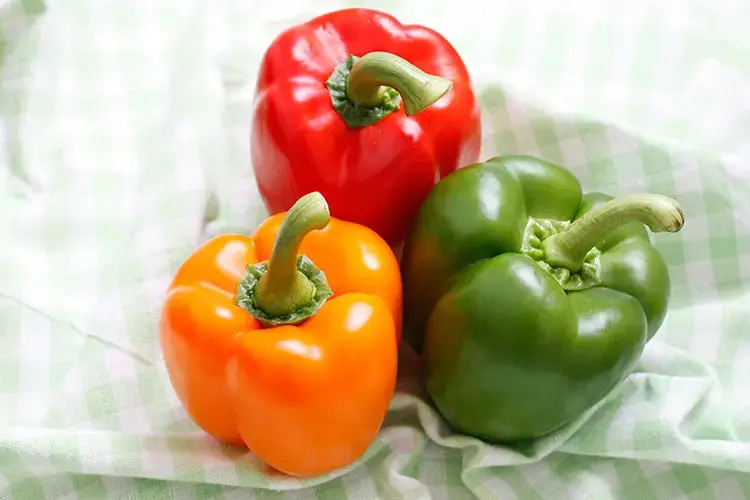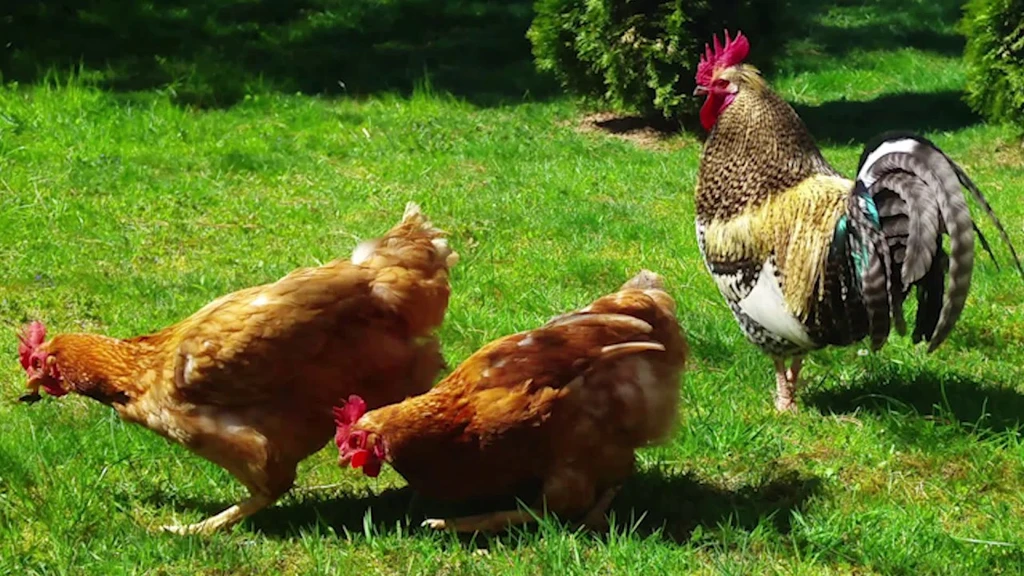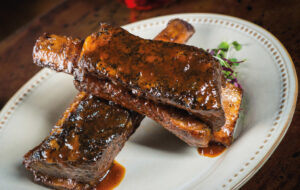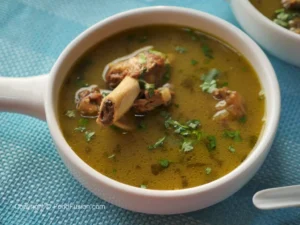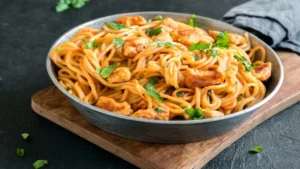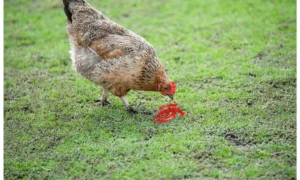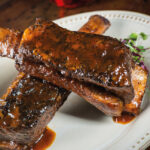If you’ve ever looked at leftover bell peppers in your fridge and wondered, “Can chickens eat bell peppers safely?”, you’re not alone. Backyard chicken keepers across the USA are always on the hunt for new, healthy treats for chickens and bell peppers might just be a colorful, nutritious option. But are they completely safe? And what parts should be avoided?
In this guide, we’ll crack open everything you need to know about feeding bell peppers to backyard chickens from nutritional value to safety tips and everything in between.
Can Chickens Eat Bell Peppers Safely?
Yes, bell peppers are safe for chickens, but only when fed properly. Chickens can enjoy the flesh of bell peppers just like we do. These vibrant veggies are non-toxic, low in calories, and offer a refreshing crunch that chickens tend to love.
But here’s the catch—not all parts of the pepper are safe. We’ll dive into that later, but for now, know this: the sweet part of the bell pepper is a green light for your flock.
Compared to other chicken-safe garden veggies like zucchini, cucumbers, or spinach, bell peppers stand out due to their unique antioxidant content and vibrant color, which usually means higher nutrient density.
So if you’re asking, “what vegetables can chickens eat?”, bell peppers are a solid addition when served correctly.
Nutritional Benefits of Bell Peppers for Chickens
Bell peppers come loaded with nutrients, especially the red ones. The nutritional value of bell peppers for chickens includes vitamins like A, C, E, and a dose of beta-carotene that helps with immune strength and feather health. Chickens also benefit from the hydration boost since bell peppers are mostly water.
Here’s a quick table showing what each color offers per 100g:
| Bell Pepper Color | Vitamin A (IU) | Vitamin C (mg) | Antioxidant Level | Notes |
|---|---|---|---|---|
| Red | 3131 IU | 127.7 mg | High | Sweetest and most nutritious |
| Yellow | 200 IU | 183.5 mg | Medium | Milder flavor, still sweet |
| Green | 370 IU | 80.4 mg | Lower | Less sweet, slightly bitter |
Adding a pepper or two to your hens’ snack rotation can help improve their overall health. This is why red vs green bell peppers for chickens becomes important—red bell peppers are richer in nutrients, while green ones are still okay but offer fewer benefits.
Can Bell Peppers Be Harmful to Chickens?
The pepper flesh? Totally fine. But the other parts? That’s where things get tricky. Are bell peppers safe for chickens? Yes, but the stems, seeds, and leaves are not. These parts contain solanine, a toxic compound found in plants from the nightshade family, which includes tomatoes and eggplants.
So, if you’re wondering “are bell pepper seeds safe for chickens?”, the answer is a firm no. Solanine can lead to symptoms like weakness, diarrhea, and in extreme cases, even death. That’s why you should only feed them the inner, soft flesh. Never give them leaves or unripe green plant parts. This is a critical point in every chicken feeding guide.
What Color Bell Peppers Can Chickens Eat?
Can chickens eat red bell peppers? Absolutely—and they’re the best option. These peppers are the ripest and the most nutrient-dense. The bright color also makes them more appealing to your birds.
Can chickens eat green bell peppers or can chickens have green peppers? Yes, but these are simply unripe versions of red ones. They’re more bitter and offer fewer vitamins.
Orange and yellow peppers sit somewhere in between. They’re also safe and enjoyed by many chickens. Each color is okay as long as you stick to the edible flesh and avoid the plant’s other parts.
How to Feed Bell Peppers to Your Chickens
When it comes to how to feed chickens bell peppers, the process is pretty simple. Wash the peppers thoroughly to remove any pesticides. Cut them open, remove the seeds and stem, and chop the flesh into small, manageable chunks. Chickens don’t chew like we do, so smaller pieces reduce the risk of choking.
You can offer raw slices as a crunchy snack, or mix them in with cooked rice, corn, or even yogurt for a fun, colorful blend. Yes, chickens can eat raw bell peppers, and in fact, that’s the best way to preserve their vitamin content.
Some owners even freeze pepper slices and give them on hot days as a refreshing treat—kind of like a chicken popsicle.
Bell Pepper Parts Chickens Should Avoid
To keep things crystal clear, here’s what’s okay and what’s not:
| Part of Bell Pepper | Can Chickens Eat It? | Why or Why Not |
|---|---|---|
| Pepper Flesh | Yes | Safe, hydrating, full of vitamins |
| Seeds | No | Can contain toxic compounds (solanine) |
| Stem | No | Bitter, contains toxins, hard to digest |
| Leaves | No | From nightshade family, potentially toxic |
This breakdown makes it easy to remember what not to feed chickens when you’re preparing veggies.
How Often Should Chickens Eat Bell Peppers?
Like all healthy treats for chickens, bell peppers should be given in moderation. A good rule is no more than two to three small servings per week. Think of them as a supplement, not a main course.
Chickens need a balanced diet, primarily made up of layer feed, grains, and protein. Veggies should only make up about 10% of their total food intake. Overfeeding peppers or any treat can throw off that balance.
Do Chickens Like the Taste of Bell Peppers?
You might be surprised, but yes—chickens do like bell peppers! Especially the sweeter varieties. Many flock owners report their birds pecking at red pepper slices with real enthusiasm. Others might be more cautious at first, especially if they’re used to a plainer diet.
Like humans, chickens have their preferences. Some might love peppers right away, while others need time to warm up to the taste. Still, when offered occasionally, they can be a favorite among chicken-safe garden veggies.
Tips for Introducing Bell Peppers Into a Chicken’s Diet
Introducing a new food to your flock should be done gradually. Start with a small piece and see how your chickens react. Mix it with foods they already enjoy to make the transition smoother.
Offer the peppers during calm moments, not during feeding frenzies. Watch how each chicken responds and remove any uneaten bits before they spoil. This helps prevent mold, which is harmful to birds.
One fun idea? Try hanging a whole pepper (with the stem and seeds removed) from a string to create a toy-treat combo. It gives your flock something to peck at, keeping them both fed and entertained.
FAQs
Q:Can chickens eat raw bell peppers?
A:Yes. Chickens can eat the whole fruit of the bell pepper. However, do not feed your flock the stems, leaves, or flowers.
Q:Does red pepper deworm chickens?
A:Will not deworm a flock.
Q:Which pepper is good for chicken?
A:Any color pepper you prefer.
Q:Is garlic good for chickens?
A:Small amounts of crushed raw garlic fed to baby chicks twice a week not only help their immune systems develop but also get them used to the flavor so they will be more likely to accept it later in life
Q:Is onion good for chickens?
A:Signs of onion toxicity in birds include diarrhea, loss of appetite, listlessness, paleness, difficulty breathing, and red-tinged urates.
Conclusion
So, can chickens eat bell peppers safely? Yes—just the right parts, in the right way. Can chickens have bell peppers regularly? Sure, but treat them like a colorful bonus, not the main dish. Whether it’s red, yellow, or green, bell peppers offer a crunchy snack that’s packed with vitamins and water content.
Remember, the best vegetables for a chicken diet are the ones that add variety without disrupting their nutritional balance. Bell peppers fit right in—as long as you avoid the seeds, stems, and leaves. When in doubt, think of peppers as a bell pepper chicken treat, not a meal replacement.
If you’re still exploring what do chickens eat, or looking for more safe vegetables for poultry, bell peppers are a smart, vibrant place to start.

